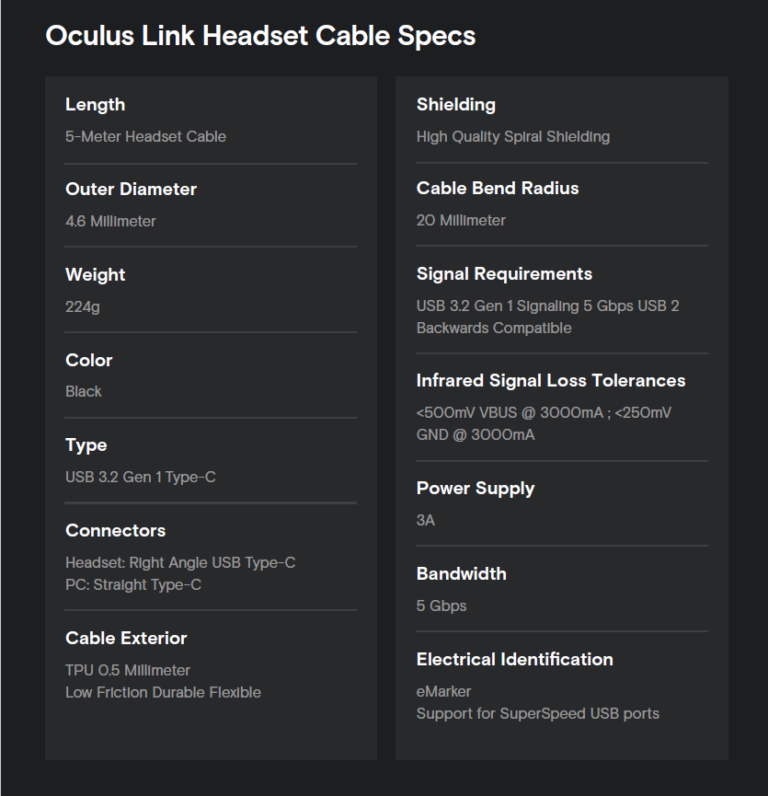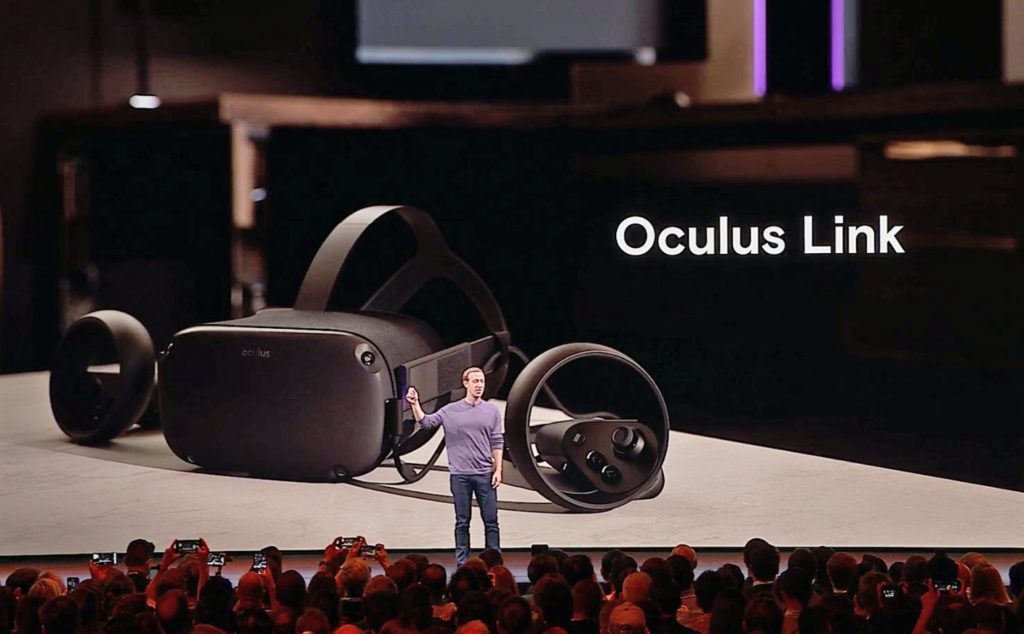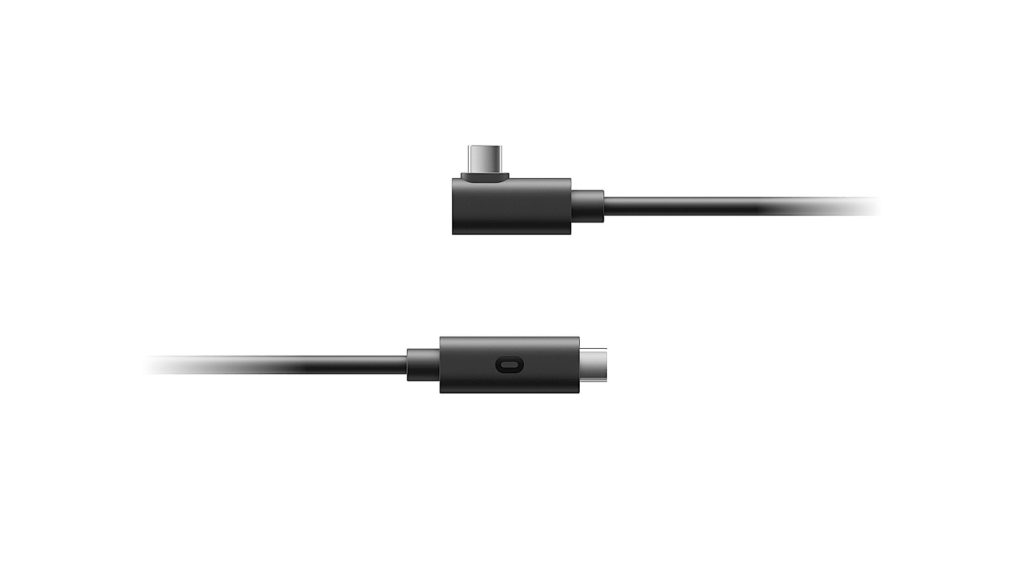Oculus promises its 16-foot fiber optic cable will provide the ideal PC VR experience on Quest.
Last month, Oculus began rolling out the beta for Oculus Link, an exciting piece of software that allows Oculus Quest users to enjoy high-end PC VR games and experiences on their standalone headsets. Using a compatible USB 3.0 cable, users can connect to a VR-ready PC to access not only the Oculus Rift/Rift S content library, but SteamVR and other VR platforms as well.
During the original announcement made this past September at Oculus Connect 6, the company promised that they would eventually release its own official cable before the end of the year. Sure enough, the company today delivered on that promise.
Available now in the USA, Canada, Australia, New Zealand, Japan, and Taiwan for $79.99 via the Oculus Store, Oculus’ official Link cable is an absolute beast at 16-feet (5-meters). The fiber optic USB 3.2 Gen 1 Type-C to USB Type-C cable features high-quality spiral shielding, a 3A power supply, and 5 GBps bandwidth, all wrapped in a flexible, low friction package that promises more comfortable movement while immersed. Long story short, this cable is designed from the ground-up for running PC VR content on Oculus the Quest. But why exactly would you choose this expensive $80 cable when there are several, far cheaper solutions online?

The biggest difference between the official Oculus solution and that of a third-party manufacturer is that of length. Users have been sharing and reviewing numerous sub $20 cables for weeks now; even Oculus themselves recommended the 10-foot Anker Powerline ($16.99) as a temporary solution; there’s also the 10-foot PartyLink USB 3.1 Type-C. While 10-feet may sound like a generous amount of length, most tethered VR headsets tend to offer at least 16-feet, including the HTC Vive, Oculus Rift S, and Valve Index. This leaves the user plenty of room to move around a room-scale space without the fear of painfully yanking the cable out of their expensive PC. As soon as you begin searching for Quest-compatible USB 3.0 cables longer than 10-feet, the prices begin to spike. This is because active cables—copper cables capable used for data transfer—are more expensive to produce than passive cables.
There are several Link-compatible 15-foot USB 3.0 cables available through Amazon at the moment, including the TetherPro USB 3.0 to USB-C ($48.95) as well as the TetherPro USB-C to USB-C ($56.95); each of which features relatively similar specs to Oculus’ cable, including full shielding and plated protection. That being said, these options lack any charging capabilities and can only be used for data transfer. While the lack of charging may not a dealbreaker per se, Oculus’ official cable is capable of transferring data while charging the Quest headset.

In the end, it generally boils down to convenience. If you’re looking for the cheapest option possible and don’t mind being tied to a short leash, your best bet may be to go for one the 10-foot Anker cable. Those looking for a more comfortable experience, but can’t get past Oculus’ $80 price tag, you might be better off with one of the 15-foot TetherPro options. Again, a majority of the cables in this price range ($50 – $60) will lack support for both data transfer and charging. But if you don’t mind having to pause your session for a couple of hours to charge up your headset, you could save yourself $30 with a more basic alternative.
Honestly, if you’re already spending $60 on a third-party cable, you might as well shell out the additional $20 and go for Oculus’ official solution. The cable features high-quality components and supports both charging and data transfer, allowing you to comfortably enjoy PC VR content as long as you’d like without the fear of running out of juice mid-session. Of course—like any purchase—the cheaper the device, the more likely you’ll run into continued issues. Oculus’ cable was tailor-made with Link software in mind, meaning you’re far less likely to run into any hiccups, stutters, or game-breaking crashes.

While the expensive pricing may have come as a shock to users initially, the further you dig into the third-party alternatives, the more reasonable this $80 becomes.
The official Oculus Link cable is available for purchase now. According to Oculus, the cable will have “limited availability” through 2020. No word yet on when the device will be made available in Europe.
Feature Image Credit: Oculus
The post Official Oculus Link Cable Now Available, But Is It Worth The $80 Price Tag? appeared first on VRScout.
from VRScout https://ift.tt/2rUrKyf
via IFTTT
No comments:
Post a Comment